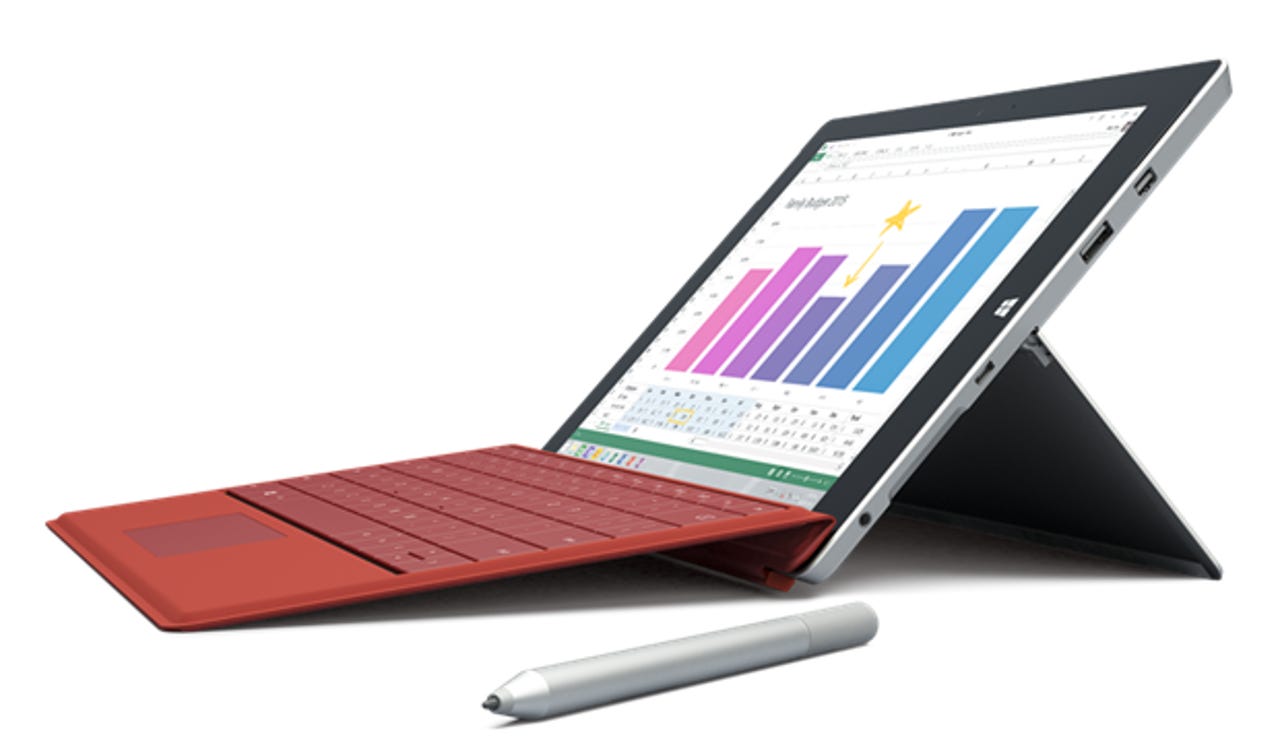A first look at Microsoft's smaller, lighter Surface 3, now with full Windows


I've just unboxed one of the first shipping units of Microsoft's Surface 3. Like every previous member of its family, it's solidly built and physically attractive, with first-rate retail packaging.
After I've had a few days to put Microsoft's newest tablet/PC hybrid through its paces, I'll have more to share on what the experience is like, especially how well it does on battery life (Microsoft claims 10 hours). For now, here are some first impressions of the Surface 3.
This is, for all practical purposes, a scaled-down version of the successful Surface Pro 3. And when I say "scaled down," I mean that in every sense.
More Coverage
At 10.8 inches (measured diagonally), the Surface 3 is noticeably smaller than the 12-inch Pro 3 model. Both models have high-DPI displays, with the Surface 3's display resolution of 1920 x 1280 matching the unique 3:2 aspect ratio of the Pro 3.
The Surface 3 is the lightest Surface device Microsoft has ever offered for sale. As a tablet, the Surface 3 weighs 622 g (1.37 lb); with the optional Type Cover, which turns it into a PC, it weighs 904 g (just a feather under 2 lbs). That's a half-pound less than the Pro 3.
Computing power is scaled down as well. To fit in the slim (8.7 mm, or 0.34 in.), fanless enclosure, the Surface 3 uses an Atom x7-Z8700 processor (it's the first device to ship with a CPU from Intel's new Cherry Trail series). That's significantly less processing power than the Core i3/i5/i7 CPUs in the Pro 3. The two standard configurations also offer half the RAM of the Pro 3 model, with storage maxing out at 128 GB.
The Surface 3 has a microSD slot, a single USB 3 port, and a mini-DisplayPort adapter, just like its larger sibling. It also has front and rear webcams. The biggest hardware difference is a three-position kickstand instead of the continuously variable kickstand on the Surface Pro 3.
The payoff for those changes is a scaled-down price tag. It's hard to make direct comparisons, but the Surface 3 starts at $499 (with 2 GB of RAM and 64 GB of flash storage), whereas the entry-level Surface Pro 3 is $300 more. Both models charge extra for the Type Cover ($129). There's also the pen, a distinctly useful device that costs $49 extra with the Surface 3 but is included in the box with the Pro 3.
Like its big brother, the Surface 3 is a full Windows PC. Microsoft's experiment with ARM-based processors and Windows RT officially ended with the Surface 2. The Surface 3 is based on an x86 processor and it runs Windows 8.1. The biggest knock against the Windows RT-powered Surface devices is that they couldn't run traditional Windows apps. Microsoft wants to make it very clear that's not an issue anymore, even touting iTunes compatibility as an essential feature.
The Surface 3 also runs Google Chrome and Chrome apps, though you're unlikely to see that fact highlighted in any Microsoft marketing material.
Although they're not available for pre-order yet, there will be LTE versions of the Surface 3, including an unlocked GSM version. The LTE models will be priced $100 higher than the Wi-Fi-only equivalents and will include full GPS support.
This device is considerably more mobile than the Surface Pro 3, which is no slouch in that department. Its size and weight make it an easier fit in a small bag, and the decision to use micro-USB for charging means you can plug it into any phone charger and top up the battery. The included 13W charger will get quickest results (and for those keeping score, that's the third different power connector for the Surface line). But you don't need to worry about packing it in the travel bag as long as you have access to at least a 10W USB charger.
The Surface 3 is aimed at would-be PC buyers for whom the Surface Pro 3 is too big, too expensive, or both. You can make a credible comparison between this device and the iPad (which also starts at $499) and the entry-level MacBook Air (which starts at $899 in a configuration that's equivalent to the maxed out Surface 3 configuration, which costs about $780 with 4 GB of RAM, 128 GB of flash storage, Type Cover, and pen). The difference is that the Surface 3 can play either role.
Whether it can pass the "just right" test remains to be seen.